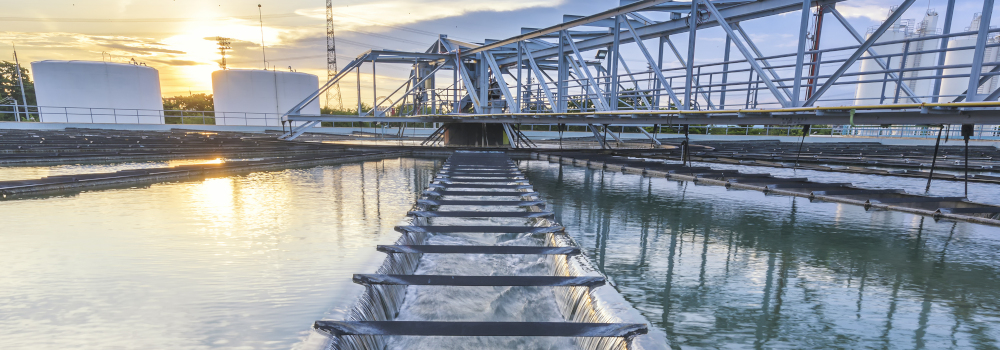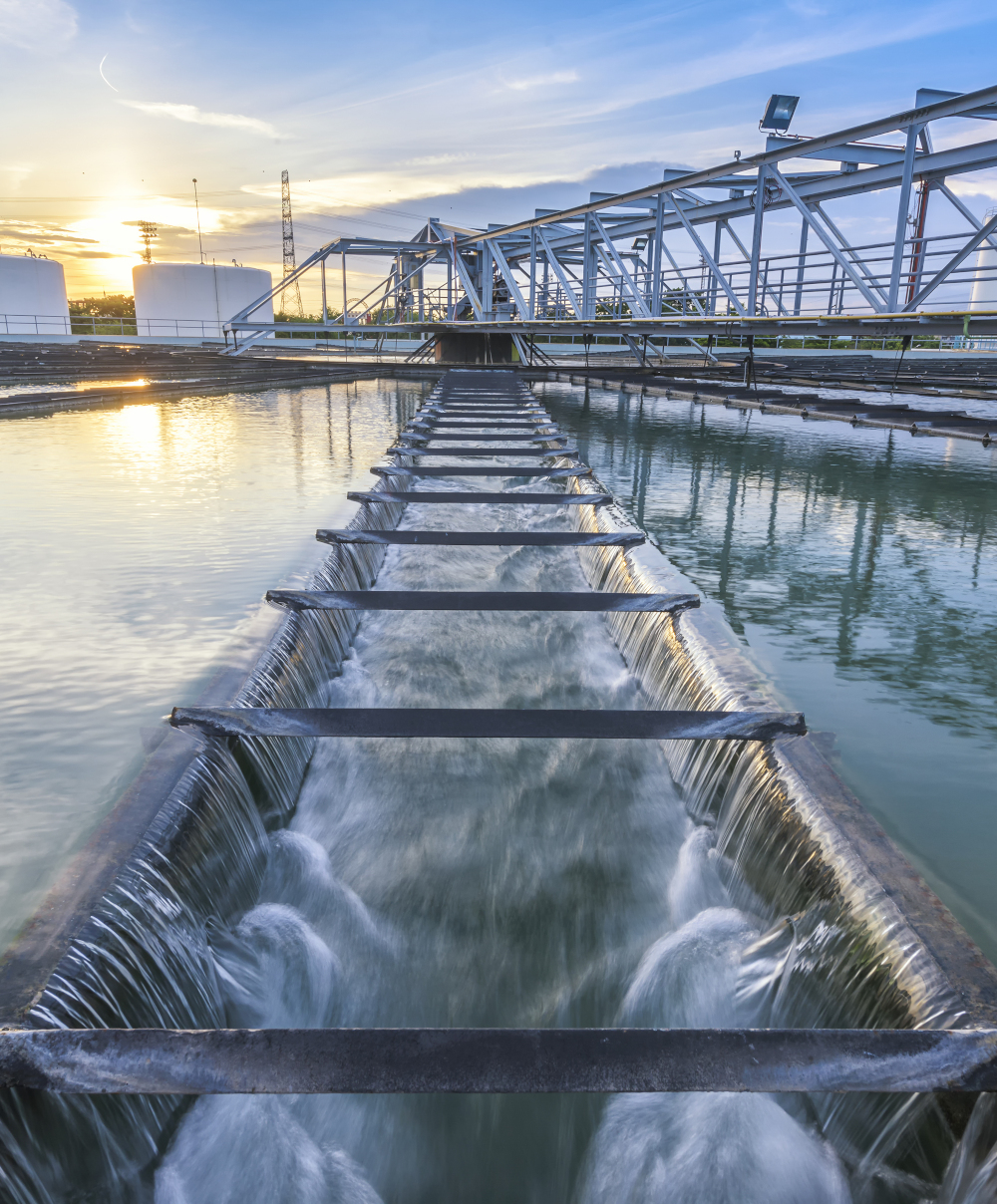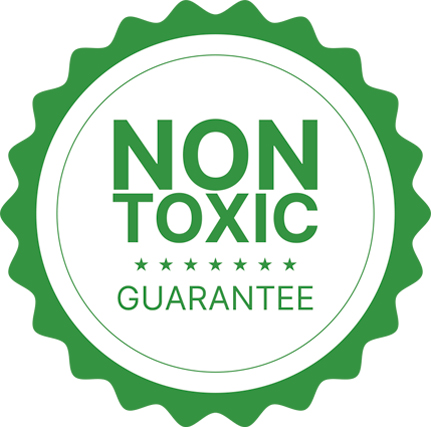Our Skills

 Advanced oxidation: definition and main principles
Advanced oxidation: definition and main principles
First developed in the beginning of the 20th century, advanced oxidation has established itself as a cutting-edge technology for effectively eliminating persistent organic pollutants from our environment. The genesis of this process stems from the need to degrade toxic pollutants in a booming industrial context. The popularity of advanced oxidation has grown in recent decades as a responsible and environmentally-friendly treatment solution.
The principle of advanced oxidation is the treatment and depollution of water that effectively targets persistent organic pollutants in our environment. This approach is based on a chemical process in which substances react with oxygen or other oxidising agents to break down into less harmful products.
Advanced oxidation is a diverse family of technologies encompassing a wide variety of techniques such as ozonation, photo-oxidation and hydrogen peroxide oxidation. Each of these methods relies on mechanisms that degrade or break down organic contaminants ranging from pesticides to pharmaceutical residues and industrial chemical compounds.


The role of advanced oxidation for the environment and our health
Advanced oxidation offers unrivalled efficiency in eliminating persistent organic pollutants. This technology makes it possible to eliminate pollutants that are harmful to public health, biodiversity and the environment. By degrading these undesirable substances through the application of these treatments to industrial water, advanced oxidation helps to reduce the risks associated with chemical contamination. It thus protects the quality of drinking water and the integrity of aquatic ecosystems. In the current ecological context, where the volume of available water resources is decreasing every year, oxidation also promises to reduce industrial water consumption by allowing treated water to be reintegrated into the industrial process.
Advanced oxidation therefore plays an essential role in safeguarding public health and ensuring that the water consumed by the general public is safer and cleaner. It is a major asset in the fight against pollution and the conservation of our environment, while helping to create a more sustainable future for our planet and its inhabitants.

How does it work?
The role of hydroxyl radicals in the process
Hydroxyl radicals (OH) play a central and fundamental role in the advanced oxidation process. They are highly reactive, oxidising chemical species made up of an oxygen atom, a hydrogen atom and an unpaired electron. Their reactivity stems precisely from this unpaired electron, making them extremely reactive with organic compounds.
In the context of advanced oxidation, hydroxyl radicals are generated in the presence of powerful oxidants such as hydrogen peroxide (H2O2), ozone (O3) or ultraviolet (UV) light. The chemical reaction that generates hydroxyl radicals is generally initiated by the interaction between these oxidants and water or other appropriate molecules.
Once formed, hydroxyl radicals react with organic pollutants in water by transferring an electron. This oxidation reaction breaks the chemical bonds of the organic compounds, breaking them down into less harmful products that are easier to remove. In other words, hydroxyl radicals 'attack' organic contaminants, transforming them into simpler, less toxic substances.
The major advantage of hydroxyl radicals lies in their ability to oxidise a wide range of organic compounds, including those that are particularly resistant to degradation. As a result, they are effective at eliminating stubborn organic pollutants such as pesticides, pharmaceutical compounds and many other substances of concern.
In short, hydroxyl radicals are the key players in advanced oxidation, enabling the efficient decomposition of organic pollutants thanks to their high chemical reactivity. This ability makes them an essential technology for water treatment.



What are the different advanced oxidation processes that exist?
Here are a few examples of advanced oxidation processes, each accompanied by a brief explanation of what they involve.
Oxidation with hydrogen peroxide (H2O2)
The UV/H2O2 advanced oxidation process represents an innovative strategy for treating contaminated water. This approach combines the use of ultraviolet (UV) light with hydrogen peroxide (H2O2) to generate hydroxyl radicals (-OH), powerful oxidising agents. Exposure to UV light activates hydrogen peroxide, promoting the formation of hydroxyl radicals, which then react with organic contaminants. This process offers effective degradation of pollutants such as pharmaceuticals and other stubborn substances. UV/H2O2 has the advantage of eliminating pollutants without generating harmful by-products, thereby helping to minimise environmental impact.
Electrooxidation and electroreduction
In electro-oxidation, electrochemical reactions generate oxidising species, such as hydroxyl radicals, through the application of electric current. These highly reactive radicals can then effectively oxidise the organic pollutants present in the water.
On the other hand, the electro-reduction process uses electric current to selectively reduce certain undesirable compounds. These methods offer greater treatment precision, enabling targeted degradation of contaminants. They also have the advantage of minimising the formation of undesirable by-products.
The advanced Fenton process
The advanced Fenton process stands out in the field of advanced oxidation for its effective use of chemical reactions to eliminate pollutants. In the Fenton system, hydrogen peroxide reacts with ferrous ions in an acidic environment to generate hydroxyl radicals (-OH), highly reactive oxidising agents. These hydroxyl radicals are capable of attacking a variety of organic contaminants, transforming them into less harmful compounds. Advanced Fenton offers great flexibility of application, adapting to various types of pollutants.
In fact, the advanced Fenton process remains a powerful and adaptable option for treating polluted water, demonstrating its potential for effectively degrading undesirable organic compounds.
Oxidation using the photo-fenton process
The Photo-Fenton process represents a significant advance in advanced oxidation by integrating the principles of Fenton with the use of UV light. This system combines the catalytic action of ferrous ions with the energy of ultraviolet light to generate highly reactive hydroxyl radicals (-OH). The activated light energy accelerates the production of hydroxyl radicals, increasing the efficiency of the oxidation process. Photo-Fenton is particularly effective at degrading complex organic compounds.

Why is it useful?
Advanced oxidation is particularly effective in degrading and removing a wide range of organic pollutants, including stubborn contaminants that are difficult to treat by other methods. It can target compounds such as pharmaceuticals, pesticides, polycyclic aromatic hydrocarbons (PAHs) and many other harmful substances. Advanced oxidation technology enables effluents to be treated efficiently and effectively.
Unlike some treatment methods, advanced oxidation tends to produce less toxic by-products. Instead of simply transferring contaminants from one phase to another, it breaks them down into simpler, less harmful substances, reducing the risk of hazardous residual products.
Advanced oxidation can be adapted to different types of pollutants and matrices, whether in the treatment of drinking water, municipal or industrial wastewater, or even in soil decontamination. Its versatility makes it a valuable option for a variety of environmental applications.

Advanced oxidation for decontaminating water, air and soil
Advanced oxidation processes are used to remove organic contaminants from drinking water, ensuring the safety of the water supply. Similarly, wastewater treatment plants use advanced oxidation to remove organic pollutants from wastewater, preparing the water for safe discharge into the environment or reuse. Advanced oxidation is therefore very useful in water treatment.
In other circumstances, the advanced oxidation process can be used for air treatment or soil decontamination. In such cases, it can be used to rehabilitate contaminated soils and help restore soil or air quality.
In short, advanced oxidation is a versatile technology used in a variety of applications to eliminate harmful substances, helping to preserve human health and the environment. Its use has spread to many sectors where the reduction of organic pollutants is essential to ensure safety and sustainability.
There are many industrial sectors in which advanced oxidation processes can be applied. When it comes to water treatment, the chemical, pharmaceutical or biotechnology industries use it to degrade residual chemicals, enabling manufacturers to ensure that their effluents comply with current standards.



This treatment can also be applied to the paper or textile industry, to eliminate organic components from paper bleaching or fabric dyeing. Advanced oxidation processes are also used in the micro-technology industry. In this case, the pollutants targeted are organic residues and metals present in effluents.
These industrial sectors use advanced oxidation to ensure compliance with environmental regulations, reduce risks to public health, and minimize the impact of their activities on the environment. It is thus an essential tool in waste management and environmental preservation.
Compared with other water treatment technologies, advanced oxidation offers the versatility and adaptability that make it a state-of-the-art technology. Advanced oxidation is particularly effective in degrading and removing a wide range of organic pollutants, including stubborn contaminants that are difficult to treat by other methods. It tends to produce less toxic by-products than other treatment methods: instead of simply transferring contaminants from one phase to another, it breaks them down into simpler, less harmful substances, reducing the risk of hazardous residual products.
It can also be adapted to different types of pollutants and matrices, whether in the treatment of drinking water, municipal or industrial wastewater, or even in soil decontamination. Advanced oxidation has proven its effectiveness in many situations, sometimes with low pollutant concentrations, sometimes with changing water conditions. Advanced oxidation is also a public health and environmentally conscious treatment solution, effectively removing organic pollutants from drinking water sources, or preventing the release of harmful organic pollutants into the environment. Advanced oxidation faces many challenges

Challenge-proof advanced oxidation
Although advanced oxidation offers significant advantages, it does have some limitations, including potentially high operational and investment costs, particularly for small-scale facilities. Energy requirements and waste management concerns, especially if by-products are toxic, are also important considerations.
However, it’s important to note that other alternative technologies may be even more expensive or less accessible. Overall, these challenges should not overshadow the benefits of advanced oxidation, especially as other solutions may be less financially viable.
What’s more, contemporary water resource management challenges are prompting the government to provide aid to structures wishing to take a step towards optimizing their water management. Subsidies are available to support structures in their efforts to set up eco-responsible facilities.
See the video
 Example of effluent treatment
Example of effluent treatment
Treewater’s proposed UV/H2O2 process makes it possible to treat a broad spectrum of pollutants:
- Reduction of Chemical Oxygen Demand (COD)
- Increased biodegradability of effluents
- Reduction of refractory organic molecules such as Phthalates, Atrazine or nonylphenols…

Atrazine

Phthalates

Nonylphenols
 wastewater recycling (REUT)
wastewater recycling (REUT)
Because the potential for recycling effluents is significant and today it is under exploited, we bring our expertise to reduce water consumption and treatment costs. We integrate the Treewater advanced oxidation process in a Skid in combination with pre-treatment or post-treatment processes to guarantee water quality compatible with your needs (cleaning, process water, etc.)


 Advantages of UV/H2O2 technology
Advantages of UV/H2O2 technology
The UV/H2O2 process developed by Treewater allows the treatment of a wide spectrum of organic pollutants:
- Optimized treatment control according to the incoming water quality
- Adaptation to a large panel of organic molecules
- No use of toxic products
- Autonomous and space-saving system
- Low operational and investment costs
- Reduced maintenance

